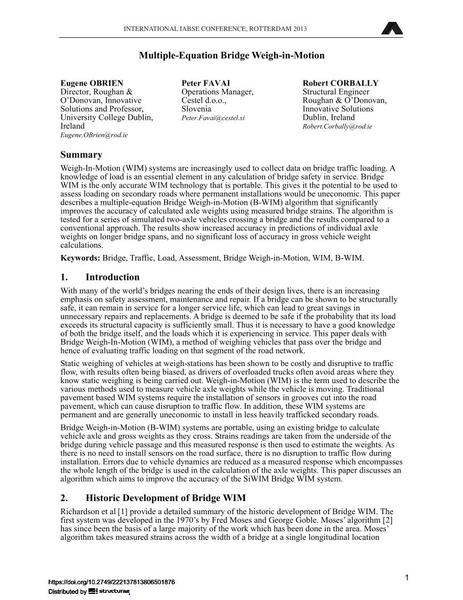Multiple-Equation Bridge Weigh-in-Motion

|
|
|||||||||||
Détails bibliographiques
| Auteur(s): |
Eugene Obrien
Peter Favai Robert Corbally |
||||
|---|---|---|---|---|---|
| Médium: | papier de conférence | ||||
| Langue(s): | anglais | ||||
| Conférence: | IABSE Conference: Assessment, Upgrading and Refurbishment of Infrastructures, Rotterdam, The Netherlands, 6-8 May 2013 | ||||
| Publié dans: | IABSE Conference, Rotterdam, May 2013 | ||||
|
|||||
| Page(s): | 424-425 | ||||
| Nombre total de pages (du PDF): | 8 | ||||
| Année: | 2013 | ||||
| DOI: | 10.2749/222137813806501876 | ||||
| Abstrait: |
Weigh-In-Motion (WIM) systems are increasingly used to collect data on bridge traffic loading. A knowledge of load is an essential element in any calculation of bridge safety in service. Bridge WIM is the only accurate WIM technology that is portable. This gives it the potential to be used to assess loading on secondary roads where permanent installations would be uneconomic. This paper describes a multiple-equation Bridge Weigh-in-Motion (B-WIM) algorithm that significantly improves the accuracy of calculated axle weights using measured bridge strains. The algorithm is tested for a series of simulated two-axle vehicles crossing a bridge and the results compared to a conventional approach. The results show increased accuracy in predictions of individual axle weights on longer bridge spans, and no significant loss of accuracy in gross vehicle weight calculations. |
||||
| Mots-clé: |
pont
|
||||
